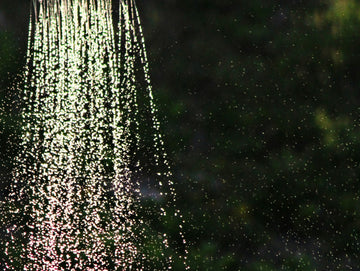If you're an eco-conscious traveler or off-grid adventurer, mastering shelter techniques is crucial to your camping experience. Whether you're battling the elements or striving to minimize your environmental impact, a well-built shelter is your key to comfort and safety.
Introduction to Off-Grid Camping and the Importance of Shelter Techniques
Off-grid camping is about immersing yourself in nature, disconnected from the conveniences of modern life. The core of a successful off-grid experience is knowing how to build effective shelters. These techniques protect you from the elements and help reduce your footprint on the environment. In this post, we'll explore essential shelter techniques, gear recommendations, real-life case studies, and eco-friendly practices to elevate your off-grid adventures.
Essential Shelter Techniques for All Weather Conditions
Tarp Setups for Rainy Days
Rain can quickly turn a camping trip into a soggy mess. Mastery of tarp setups is essential for staying dry. Start by selecting a high-quality, waterproof tarp. Attach it to sturdy anchor points like trees, ensuring it's pitched at a slight angle to allow rainwater to run off. Remember, a well-pitched tarp can create a cozy, dry space for sleeping or cooking.
To secure your tarp, use taut lines and adjustable knots. These allow you to tighten or loosen the tarp as needed, preventing water from pooling. For added protection, consider creating a groundsheet using a second tarp or waterproof fabric. This helps keep your gear and sleeping area dry.
Finally, practice makes perfect. Experiment with different tarp configurations to find the one that works best for you. A-frame, lean-to, and diamond setups offer varying levels of protection and space. Each has its pros and cons, so try them all to see which suits your style.
Windbreaks and Snow Shelters for Cold Weather
Cold weather camping requires robust shelter strategies to keep you warm and safe. Windbreaks can be built using natural materials like branches, logs, or even snow. Position your windbreak perpendicular to the prevailing wind to create a sheltered space.
For snow shelters, an igloo or a snow cave can provide exceptional insulation. Start by piling up snow to create a dome shape. Allow it to settle and firm up before hollowing out the interior. Remember to create ventilation holes to prevent carbon monoxide buildup from your breath or cooking stove.
Layering is another critical component of cold weather camping. Use insulated ground pads and sleeping bags rated for the temperatures you'll encounter. A well-insulated shelter, combined with proper layering, can make the difference between a successful trip and a miserable one.
Cooling Strategies for Hot Weather
Hot weather camping presents unique challenges. Keeping cool is vital for comfort and safety. Start by selecting a shady campsite, preferably one near a water source. Trees and natural features can provide much-needed shade and cooler temperatures.
Create a reflective sunshade using a light-colored tarp. Position it above your sleeping area to reflect sunlight away. This can significantly reduce the temperature beneath the tarp. Additionally, consider setting up your shelter to maximize airflow. An open-sided configuration allows for better ventilation.
Hydration is crucial in hot weather. Always carry enough water and consider using a portable water filter to replenish your supply from natural sources. Staying hydrated helps regulate your body temperature and prevents heat-related illnesses.
Low-Impact, Eco-Friendly Shelter Building
Using Natural Materials
Incorporating natural materials into your shelter building not only lessens your environmental impact but also connects you more profoundly with your surroundings. Use fallen branches, leaves, and rocks to construct your shelter. Avoid cutting live vegetation, as this can harm the ecosystem.
Natural materials can be surprisingly effective. For example, a debris hut made from leaves and branches can provide excellent insulation and protection from the elements. Gather materials from the forest floor, and use them to create a thick layer of insulation around a simple frame.
Remember, the goal is to leave your campsite looking as natural as you found it. This approach ensures that future adventurers can enjoy the same pristine environment.
Leave No Trace Principles
Adhering to Leave No Trace principles is essential for any eco-conscious camper. These guidelines help minimize your impact on the environment. Always pack out what you pack in, including trash and food scraps. Avoid disturbing wildlife and be mindful of where you set up camp.
When building shelters, choose locations that minimize your impact. Avoid sensitive areas like wetlands, meadows, or fragile ecosystems. Use established campsites whenever possible, and avoid creating new ones. By following these principles, you help preserve the environment for future generations.
Incorporate these practices into your shelter-building routine. Use natural materials judiciously, and always aim to leave your campsite better than you found it. This mindset fosters a sense of stewardship and responsibility towards the environment.
Gear and Tools for Mastering Shelter Techniques
Recommended Gear List
A well-stocked gear list is essential for any off-grid camping adventure. Start with a high-quality tarp, tent, or bivvy bag. These items form the foundation of your shelter and provide essential protection from the elements.
Invest in a reliable multi-tool, which can be invaluable for cutting, sawing, and making adjustments to your shelter. Paracord is another versatile item that can be used for securing tarps, creating clotheslines, or even as a makeshift belt.
Don't forget a good sleeping bag and ground pad. These items contribute significantly to your comfort and warmth. Choose a sleeping bag rated for the temperatures you'll encounter and a ground pad that offers adequate insulation.
DIY Shelter-Building Tools
Building your own shelter can be incredibly rewarding. Equip yourself with the right tools to make the process easier. A folding saw or a compact hatchet can be useful for cutting branches and shaping materials. These tools are lightweight and easy to carry.
Consider adding a set of lightweight tent stakes and a mallet to your kit. These items make securing your tarp or tent more manageable, especially in challenging terrain. A small shovel can also be handy for digging drainage trenches or leveling your campsite.
Finally, practice using these tools before your trip. Familiarity with your gear can save time and effort in the field, allowing you to focus on enjoying your adventure.
Case Studies and Real-Life Examples
Success Stories of Off-Grid Campers
Learning from others' experiences can provide valuable insights and inspiration. Consider the story of Jane, an off-grid camper who successfully built a shelter using only natural materials. Her meticulous planning and resourcefulness allowed her to create a comfortable, eco-friendly campsite.
Another example is Mark, who used a combination of tarps and natural materials to build a windproof shelter in harsh winter conditions. His ingenuity and attention to detail ensured he stayed warm and safe throughout his trip.
These success stories highlight the importance of preparation, creativity, and a deep understanding of the environment. They serve as inspiration for anyone looking to master off-grid shelter techniques.
Lessons Learned from Failures
Not every shelter-building attempt goes as planned. Learning from failures can be just as valuable as learning from successes. Take Sarah, for example, who underestimated the importance of securing her tarp properly. A sudden rainstorm left her soaked and uncomfortable.
John's experience with building a snow shelter also offers valuable lessons. He didn't create adequate ventilation, leading to condensation buildup and an uncomfortable night's sleep. These experiences underscore the importance of thorough preparation and attention to detail.
By learning from others' mistakes, you can avoid common pitfalls and enhance your shelter-building skills.
Engaging Visuals and Step-by-Step Guides
Infographics and Images for Each Technique
Visual aids can significantly enhance your understanding of shelter-building techniques. Look for infographics and images that illustrate each step of the process. These visuals can provide clarity and make complex concepts more accessible.
For example, a detailed infographic on tarp setups can show you precisely how to tie knots, position the tarp, and secure it against wind and rain. Images of completed shelters can also provide inspiration and help you visualize the end result.
Video Tutorials for Practical Application
Video tutorials are another valuable resource. Watching someone build a shelter in real-time can provide insights that written instructions alone might miss. Look for tutorials from experienced campers and survivalists who can demonstrate techniques step-by-step.
These videos can cover a range of topics, from basic tarp setups to advanced snow shelter construction. Pause and rewind as needed to ensure you fully understand each step. Practice alongside the video to reinforce your learning and build confidence in your skills.
Conclusion and Next Steps
Mastering shelter techniques is essential for any off-grid adventurer. By understanding how to build effective shelters, you can enhance your comfort, safety, and enjoyment of the great outdoors. From tarp setups to eco-friendly practices, the skills you gain will serve you well on countless adventures.
Take the knowledge you've gained here and put it into practice on your next camping trip. Experiment with different techniques, learn from your experiences, and continue to refine your skills. Remember, the joy of off-grid camping lies in the connection with nature and the sense of accomplishment that comes from self-sufficiency.
We'd love to hear about your experiences and see your shelter creations. Share your stories and photos with our community, and continue to explore the many facets of off-grid living. Together, we can inspire and support each other in the pursuit of adventure and sustainability. Happy camping!




